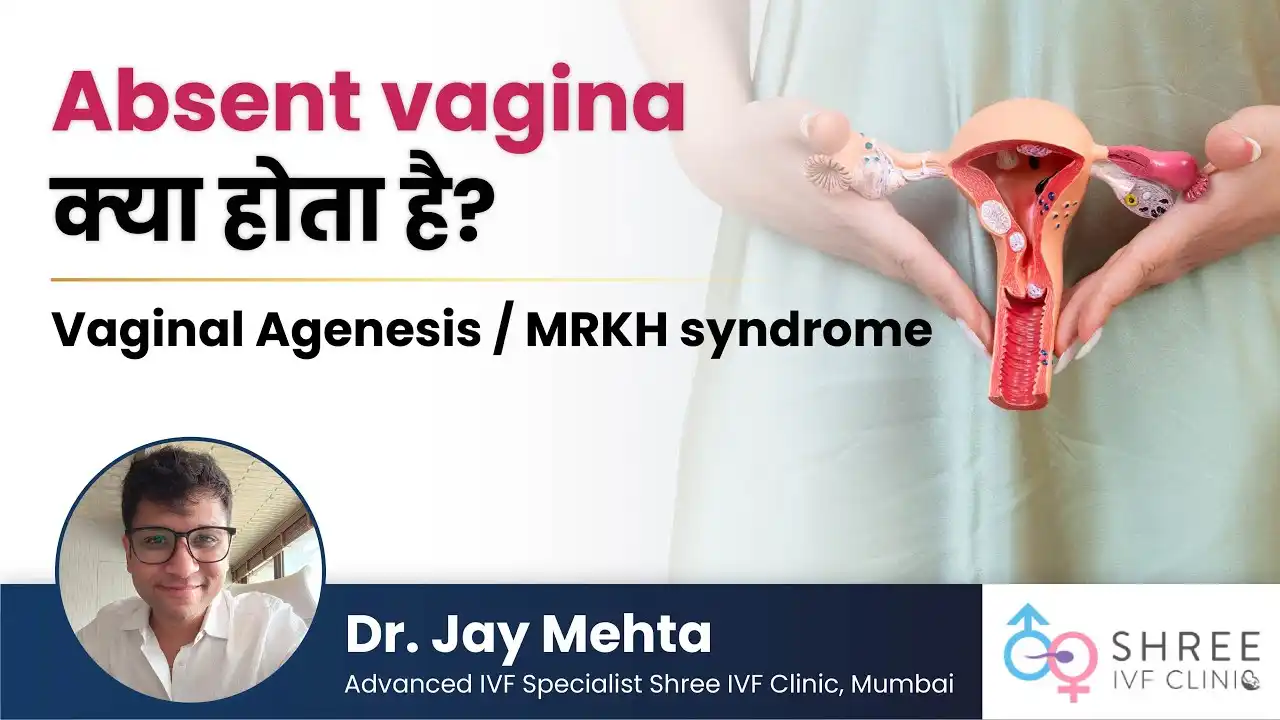Absent vagina के लिए Treatment या Surgery (MRKH syndrome)
UPDATED ON 25 NOV. 2023
Vaginal agenesis, also known as Mayer-Rokitansky-Küster-Hauser (MRKH) syndrome, presents unique challenges to those it affects. When considering treatment, there are primarily two routes: non-surgical and surgical interventions.
The choice between these paths often depends on individual circumstances, patient preferences, and the recommendations of healthcare professionals. Here, we will explore the available treatments in detail, helping those affected understand their options.
If you dont know about MRKH please read this : Absent vagina क्या होता है?
AUTHOR
Dr Jay Mehta
Scientific Director & IVF Specialist with 10+ years of experience
TREATMENT
CONDITION
GET IN TOUCH ON
Non-Surgical Treatments: The Gradual Approach
For some women with vaginal agenesis, non-surgical methods are a preferable first step. Vaginal dilation therapy is often recommended, which involves the use of medical dilators that come in various sizes. The process is gentle and gradual:
- Consultation with a Specialist: The journey begins with consulting a healthcare provider who specializes in pelvic health. They will assess the anatomy and prescribe the appropriate size of dilators.
- Guided Instruction: A patient is usually instructed on how to use dilators and provided with a lubricant to make the process as comfortable as possible.
- Routine Dilation: The process involves regular and gradual insertion of the dilator into the vaginal area to create or expand a vaginal canal. This routine needs to be followed with consistency, often daily, for several minutes.
- Progressing Sizes: As the treatment progresses, larger dilators are introduced to gradually increase the depth and width of the vaginal canal.
This non-surgical approach requires dedication and can take several months to achieve a functional vaginal canal. It’s non-invasive, cost-effective, and can be performed in the privacy of one’s home.
Surgical Treatments: Creating a New Path
When non-surgical methods are not an option or a patient’s preference lies with surgical intervention, there are several procedures to consider:
- Skin Grafts: A surgeon may use grafts from the patient’s own body, like skin from the buttocks or thighs, to construct a vaginal canal.
- Bowel Segment: Another option is to use a section of the bowel to create the vagina, which provides a natural lubrication similar to that of a biological vagina.
- McIndoe Procedure: This is a common surgical technique where a space is created between the bladder and the rectum, and a skin graft is placed over a stent to form the new vagina.
- Davydov Procedure: In this procedure, a peritoneal graft is taken from the lining of the abdominal cavity to create the vaginal canal.
- Use of Synthetic Materials: Sometimes, synthetic or biological materials are used to line the newly created vaginal space.
Each surgical option comes with its own set of complexities and potential complications, such as scarring, the need for additional surgeries, or issues with graft compatibility.
Post-Surgical Care and Considerations
Recovery and Maintenance
After surgery, recovery varies from patient to patient but typically involves:
- Hospital Stay: Immediately following the surgery, a patient may need to stay in the hospital for several days for monitoring
- Pain Management: Pain and discomfort are managed with medications prescribed by the surgeon.
- Use of a Mold: A mold or stent is usually inserted post-surgery to keep the new vagina open during the healing process.
- Physical Therapy: Pelvic floor physical therapy may be recommended to help with recovery and functionality.
- Follow-up Care: Regular follow-up visits are crucial to ensure healing is on track and to address any concerns.
Long-Term Outcomes
Most individuals who undergo surgical treatment for vaginal agenesis can have a fully functional vagina, allowing them to engage in sexual activity comfortably. The long-term psychological benefits are significant as well, as this often improves self-esteem and sexual identity.
Emotional and Psychological Support
The impact of vaginal agenesis treatment extends beyond physical considerations. Psychological support is an integral part of the care for individuals with MRKH.
Counseling or therapy can provide a space to process emotions, while support groups connect individuals with others who share similar experiences.
Fertility Considerations
While these treatments can provide a solution for sexual function, they do not address the issue of fertility for those with an absent or underdeveloped uterus. However, options like surrogacy or adoption are available for individuals looking to start a family.

4,790+
379K+
” Every individual and couple’s journey is unique, and
finding the right solutions tailored to their specific
circumstances can make all the difference “
Choosing the Right Gynecology
Selecting an experienced gynecologist to treat in treating MRKH syndrome is critical. It ensures that patients receive comprehensive care tailored to their specific needs.
Establishing a trustworthy relationship with a healthcare team empowers patients to make informed decisions about their treatment options.
Conclusion
Treatment for vaginal agenesis is a deeply personal journey. With advancements in medical science, those affected by this condition now have access to a range of treatments that can significantly improve their quality of life.
Whether through non-surgical means or through the aid of skilled surgeons, a pathway toward a functional and fulfilling life is more accessible than ever. If you want to know more about the treatment of Absent Vagina, feel free to reach out. Our experts are here to assist.
AUTHOR
Dr Jay Mehta
Scientific Director & IVF Specialist with 10+ years of experience
CONDITION
CALL US 24/7 FOR ANY HELP
GET IN TOUCH ON
Share Article on
Recommended Reading
Absent vagina क्या होता है? | Vaginal Agenesis / MRKH syndrome – Dr Jay Mehta
There are numerous medical conditions that often remain outside the general public’s awareness. One such condition is the absent vagina


